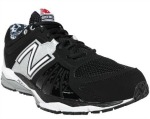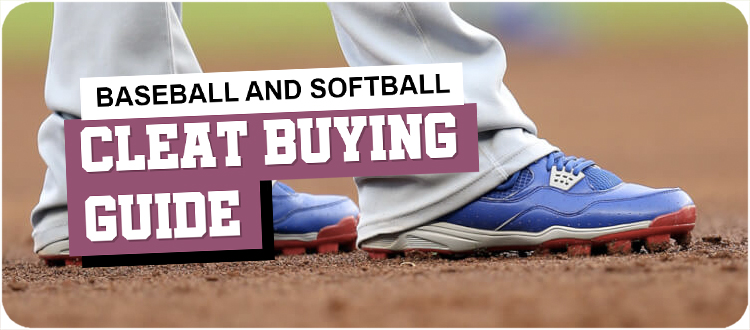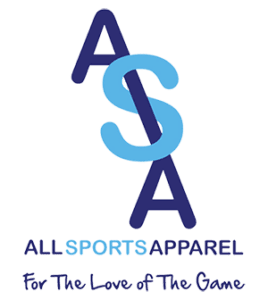Baseball and Softball Cleat Buying Guide
The types of baseball and softball cleats that are available now have changed immensely over the course of the past several decades. These changes have all been for the better, as athletes can now trust that the cleats they put on each practice and game will help protect them from injury, and be durable enough to last throughout at least the entire season. The durability of cleats is an important factor when it comes to making a new purchase, but there are plenty of other aspects that also need to be considered. With this guide, you’ll learn:
- Different types of baseball and softball cleats
- Molded cleats
- Metal cleats
- Turf cleats
- Interchangeable cleats
- How to size baseball cleats
- Low-cut cleats vs. high-cut cleats
- Difference between baseball and softball cleats vs football and soccer cleats
Types of Baseball and Softball Cleats
There are four different types of cleats that are most popular in the sport today, and each has its own advantages and disadvantages. These types of cleats are: molded, metal, turf, and interchangeable.
Molded Cleats
 Molded cleats are versatile and durable and will last throughout the season. These cleats are made out of plastic and have rubber studs, and they’re extremely popular for youth players because they provide a bit more protection when sliding and running the bases.
Molded cleats are versatile and durable and will last throughout the season. These cleats are made out of plastic and have rubber studs, and they’re extremely popular for youth players because they provide a bit more protection when sliding and running the bases.
Metal Cleats
 Fans will see these cleats on their favorite professional and collegiate athletes. However, despite their popularity in the world of professional sports, in most recreation baseball and softball leagues, as well as youth and amateur leagues, these cleats are illegal.
Fans will see these cleats on their favorite professional and collegiate athletes. However, despite their popularity in the world of professional sports, in most recreation baseball and softball leagues, as well as youth and amateur leagues, these cleats are illegal.
That’s not to say that they don’t work very well, but safety is the main concern. The safety danger with metal cleats is on plays at a base where a runner may slide feet first. Purposely or inadvertently, these slides can lead to a potentially severe injury to a fielder’s leg. Metal cleats provide more traction on the field and are generally lighter than other cleats, which helps with player agility.
Turf Cleats
 In recent years, the popularity of turf cleats has grown, especially for practicing. Turf cleats are more comfortable than most cleats, and while they don’t offer as much grip as molded or metal cleats, they are still a solid choice. Baseball players don’t normally wear these during games, but slowpitch softball players tend to lean towards them because of their comfort during all-day tournaments.
In recent years, the popularity of turf cleats has grown, especially for practicing. Turf cleats are more comfortable than most cleats, and while they don’t offer as much grip as molded or metal cleats, they are still a solid choice. Baseball players don’t normally wear these during games, but slowpitch softball players tend to lean towards them because of their comfort during all-day tournaments.
Interchangeable Cleats
 In leagues where metal cleats are allowed, interchangeable cleats are a reliable option of footwear. It’s easy to change from metal to molded, as they’re just screwed on, which allows players to change the cleats depending on the field conditions or the rules for their league.
In leagues where metal cleats are allowed, interchangeable cleats are a reliable option of footwear. It’s easy to change from metal to molded, as they’re just screwed on, which allows players to change the cleats depending on the field conditions or the rules for their league.
These cleats tend to be a little heavier than the other options, but their versatility makes them a popular choice for a large number of players.
How to Size Baseball Cleats
There isn’t much difference in terms of cleat sizing when compared to regular sneakers. Cleats fit exactly as a regular tennis or athletic shoe does, but when it comes time to actually buy your new cleats, be sure you wear athletic socks when you’re trying them on. Wearing the proper socks will allow you to see what the actual fit will be in your new cleats when game day comes.
Many players wonder if their cleats should have a tight fit. The simple answer to this is yes. The biggest difference between purchasing cleats and regular shoes would be that you want your cleats to fit a little tighter. The main reason for this is you don’t want your feet to move around in the shoes, which could cause blisters over time. When you first get your cleats, you’ll want them to fit snuggly, as they’ll break in over time.
Purchasing cleats for youth players can be tricky. Even if a player is still growing, you don’t want to over compensate for growing room. For younger players, you should never go up more than a half size, and there should only be enough room for a single finger behind the ankle. For younger male players with smaller feet, one option is to look at buying women’s cleats.
Low-Cut vs. High-Cut Cleats
When you first know you’re going to make a new cleat purchase, in addition to seeing the different type of cleats, you’ll probably notice there are low-cut and high-cut cleats to choose from. Neither option has proven to be better than the other, but it’s really more of a personal preference as to which style a player wears.
How much stability your ankle will have and how much your movement will be affected greatly depends on which option you go with.
Low-Cut Cleats
 These styled cleats will allow for a quicker player to thrive. Low-cut cleats are lighter in weight, which allows a player to be more agile as there isn’t any restriction on his or her ankles. One caveat with low-cut cleats, though: when wearing these cleats, a player is more likely to roll their ankles when running the bases or playing the field.
These styled cleats will allow for a quicker player to thrive. Low-cut cleats are lighter in weight, which allows a player to be more agile as there isn’t any restriction on his or her ankles. One caveat with low-cut cleats, though: when wearing these cleats, a player is more likely to roll their ankles when running the bases or playing the field.
High-Cut Cleats
 For any player who has ankle problems, these styled cleats are often the best bet. They provide more ankle support than low-cut cleats do. These have more material than the low-cut style, making them a bit heavier, but for those players who are not considered base stealers, this typically isn’t an issue.
For any player who has ankle problems, these styled cleats are often the best bet. They provide more ankle support than low-cut cleats do. These have more material than the low-cut style, making them a bit heavier, but for those players who are not considered base stealers, this typically isn’t an issue.
Other Factors
While the type and style of the cleat are important, there are other factors to consider when making your next softball or baseball cleat purchase.
Material
The traditional cleat is made of leather. Leather cleats tend to breathe better, but there are cleats made of synthetic material that are better for wet and muddy field conditions.
Stud Length
With some cleats, a player will have the option of changing the stud length of their cleats. Different lengths work better on certain fields and different field conditions. Generally, shorter studs work better on harder fields, while longer studs work better on softer fields because they can dig into the playing surface more.
Toe Drag
Any ball player who spends time on the mound will want to consider their toe drag. Cleats with a reinforced toe area are best for pitchers because of the toe drag when pushing off the rubber during their delivery. This unique issue is only experienced by pitchers, and when cleats are not reinforced, they begin to wear down over time. There are several cleat options available for players looking for a reinforced toe, and these cleats are just as comfortable as others.
The Difference Between Baseball or Softball Cleats vs. Football and Soccer Cleats?
 The biggest difference between baseball and softball cleats compared to football and soccer cleats is the cleat pattern. Soccer cleats don’t have a toe spike, because players need to kick the ball around the field. However, this spike is vital for baseball and softball players because they need the support when running the bases. Football cleats tend to be heavier than those used by any other sport, and these would never feature metal spikes.
The biggest difference between baseball and softball cleats compared to football and soccer cleats is the cleat pattern. Soccer cleats don’t have a toe spike, because players need to kick the ball around the field. However, this spike is vital for baseball and softball players because they need the support when running the bases. Football cleats tend to be heavier than those used by any other sport, and these would never feature metal spikes.
New players may initially think they can use cleats from another sport, but that is just not the case for baseball and softball. There are movements and actions only done on a diamond that the cleats made for the sport help with. While using football cleats in baseball technically can be done, it’s definitely not recommended, as they could really slow you down.
The need for proper, well-fitting baseball or softball cleats is something that can’t be ignored by any player looking to excel in the sport.


